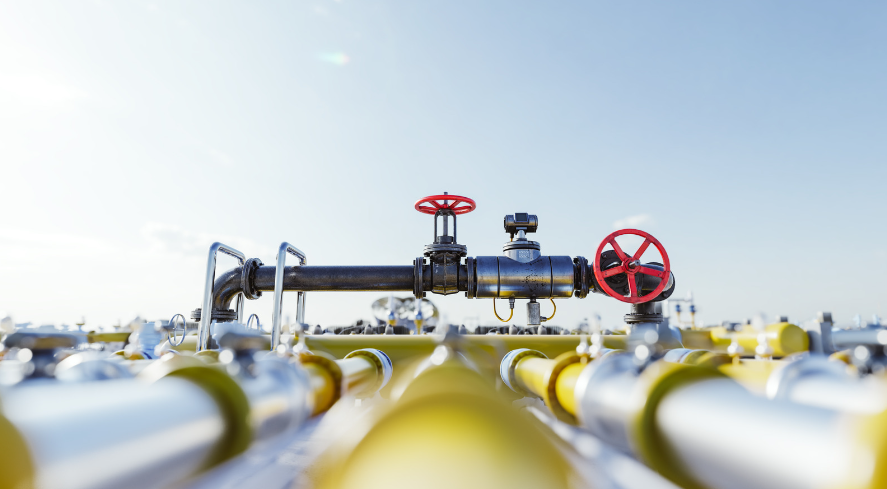
Why Hot Tapping is Essential for Modern Pipeline Management
ipeline management is a critical part of many industries, including oil and gas, water utilities, and chemicals. Ensuring the smooth operation of pipelines while maintaining safety and minimizing disruption is a constant challenge. One method that has become increasingly essential in modern pipeline management is pipeline hot tapping. This process allows for pipeline repairs, modifications, and additions to be made without shutting down the entire system, ensuring continuity of service and minimizing downtime. Understanding the importance of pipeline hot tapping can help industries adopt more efficient, cost-effective, and safer maintenance strategies.
What Is Pipeline Hot Tapping?
Pipeline hot tapping is a procedure used to make connections to existing pressurised pipelines without interrupting the flow of the transported fluids or gases. The process involves creating a hole in the pipeline under pressure and inserting a fitting to allow for the installation of a valve, pipe, or other components. The equipment used for pipeline hot tapping includes specially designed tapping machines, valves, and clamps that ensure the integrity of the pipeline is maintained throughout the procedure. This method is commonly used across industries such as oil and gas, water, and chemicals to facilitate maintenance or expansion without halting operations.
The Role of Pipeline Hot Tapping in Modern Pipeline Management
In modern pipeline management, pipeline hot tapping plays a pivotal role by allowing operators to perform maintenance, repairs, or modifications while pipelines continue to operate. The ability to carry out modifications or repairs without interrupting the service flow is crucial, especially in industries that rely on continuous delivery, such as natural gas transmission and water treatment. Furthermore, pipeline hot tapping enhances safety by allowing interventions to be performed on live pipelines without exposing workers to the risks associated with shutting down and depressurising pipelines. This process not only increases safety but also results in significant cost savings by reducing downtime.
Advantages of Using Pipeline Hot Tapping
The advantages of pipeline hot tapping are numerous and vary across industries. One of the primary benefits is its ability to maintain the continuous operation of a pipeline, reducing downtime and improving overall operational efficiency. By enabling repairs and modifications on a live pipeline, pipeline hot tapping prevents costly production stoppages and allows companies to maintain their scheduled supply. Additionally, pipeline hot tapping provides a safer alternative to traditional methods, reducing the risk of accidents associated with system depressurisation. The versatility of the method also allows it to be used with a variety of pipeline materials and sizes, making it an invaluable tool for modern pipeline management.
Applications of Pipeline Hot Tapping
Pipeline hot tapping is applied in various scenarios, including repairs, system expansions, and preventive maintenance. For instance, it can be used to isolate a section of a pipeline that is damaged or needs replacement, while keeping the rest of the pipeline operational. Pipeline hot tapping is also essential when adding new branches or creating new connections to an existing pipeline network, which is particularly useful in rapidly growing industries that require frequent infrastructure upgrades. Another common use is during routine inspections or preventive measures to maintain the pipeline’s integrity and avoid unexpected shutdowns. Regardless of the application, pipeline hot tapping offers a reliable, efficient, and cost-effective solution.
Pipeline Hot Tapping vs. Traditional Pipeline Maintenance Methods
When comparing pipeline hot tapping to traditional pipeline maintenance methods, the benefits of the hot tapping process become clear. Traditional pipeline maintenance often involves shutting down the pipeline, depressurising the system, and then performing repairs or modifications, which can be time-consuming and costly. In contrast, pipeline hot tapping allows for these actions to be carried out without disrupting the pipeline’s operation. This significant reduction in downtime not only saves money but also minimises the potential for operational interruptions. Moreover, traditional methods can involve higher risks due to the need for depressurisation and shutdown, while pipeline hot tapping is a safer alternative, particularly for high-pressure or hazardous pipelines.
Key Considerations for Safe and Effective Pipeline Hot Tapping
To ensure the success of a pipeline hot tapping operation, several key considerations must be addressed. First, proper planning and engineering assessments are essential to ensure that the pipeline can safely accommodate the hot tapping process. The size, material, and pressure of the pipeline must be considered to select the appropriate equipment and tools. The quality of the equipment used is another crucial factor in ensuring the safety and effectiveness of the procedure. Properly trained operators who understand the nuances of pipeline hot tapping are also vital, as they must follow strict safety protocols and best practices. By addressing these factors, companies can ensure that pipeline hot tapping is carried out with minimal risk and maximum efficiency.
Future Trends in Pipeline Hot Tapping Technology
The field of pipeline hot tapping continues to evolve with advancements in technology. Innovations are improving the precision, safety, and efficiency of the process, making it even more indispensable for modern pipeline management. New materials and equipment are being developed to enhance the integrity of the pipeline and reduce the time required to complete a hot tapping operation. Digital tools are also becoming increasingly integrated with pipeline hot tapping techniques, allowing operators to monitor the process in real time and make data-driven decisions. As industries move towards more sustainable practices, the demand for safer and more efficient methods like pipeline hot tapping will continue to grow.
Takeaway
Pipeline hot tapping is an essential technique for modern pipeline management, offering a safe, efficient, and cost-effective solution for maintaining and expanding pipeline systems. The ability to perform repairs, modifications, and new connections without shutting down the pipeline ensures that industries can operate without interruption. As pipeline systems grow in size and complexity, the role of pipeline hot tapping will only become more significant. Industries seeking to minimise downtime, reduce risks, and improve operational efficiency should embrace pipeline hot tapping as a key component of their pipeline management strategy.
